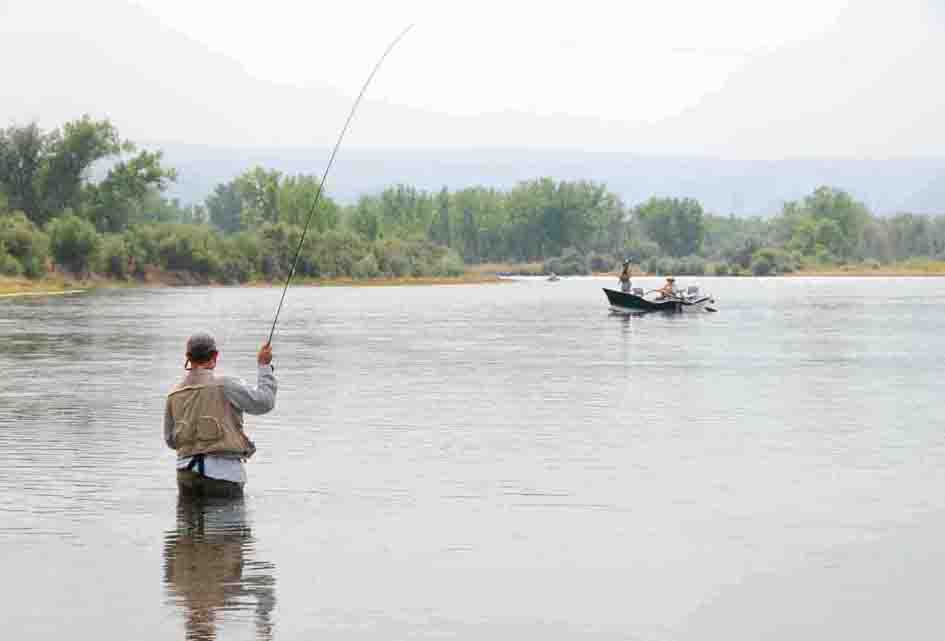Bighorn River: Are You Ready?

Unless something changes, the 2010 fishing season on the Bighorn River will turn out to be a dry fly year to remember. Low water, an abundance of fish, prolific hatches, and even a forecasted grasshopper plague, are just some of the reasons I make this statement. But to take full advantage of this special year, the angler must prepare himself.
Many anglers arrive on the Bighorn with minimal casting and fly presentation skills. While our experienced guides can place you in the most productive runs, and provide you with quality instruction, if your skill level is low, you will not be able to take full advantage of what this river has to offer. Presently, the river is very “technical”—in other words, it demands a certain amount of skill in order to hook fish consistently. The advanced angler is catching lots of fish, while the novice and intermediate are struggling. This is because the advanced angler understands the importance of presentation and is able to cast accurately. Bighorn trout are wild fish, and as such are wary and selective. This is also the reason they are so beautiful and fight so well. Generally, these wild trout will not tolerate splashy casts, excessive drag on the fly, or anglers wading too close. And you may have to drift that fly over them a number of times in order to correctly time the trout’s feeding rhythm in order to have him rise to your fly.
While the down-and-across drift method is popular on a number of rivers where selective trout reside, I usually find an upstream casting approach preferable here on the Horn. Stay downstream and a little to one side of the fish and cast upstream to them. This allows you to stay out of the fish’s field of view. Be careful to avoid “lining” the fish: you don’t want your fly line to land directly over, or to close to, where the fish is holding in the current. If you muff a cast, this will usually “put the fish down,” (stop him from feeding on the surface), and it may spook the fish out of that area completely. Make sure that only the fly and leader drift over the fish.
There are a number of good instructional DVDs out there on fly casting. Lefty Kreh, Joan Wulff, and the late Mel Krieger have all put out quality videos on the subject. I had the opportunity to guide Lefty Kreh here on the Bighorn almost 20 years ago, and I can vouch for the fact that Lefty is the real deal as far as casting and fishing. I’m sure I learned more than he did during the trip. Lefty understands the physics of fly casting as well as anyone on the planet. If you watch his videos, pay special attention to how he keeps the rod tip tilted back during the forward casting stroke. This allows more of the rod blank to flex and contribute to the cast. This principle is absolutely essential for distance casting, but will also provide benefits in all aspects of casting.
So if your fly casting skills need some work, consider viewing a video and spending some practice time out on the lawn or on your local stream before you arrive for your guide trip. The Bighorn River can truly be a dry fly fisherman’s paradise, but you need to prepare for the challenge. The reward is worth it.